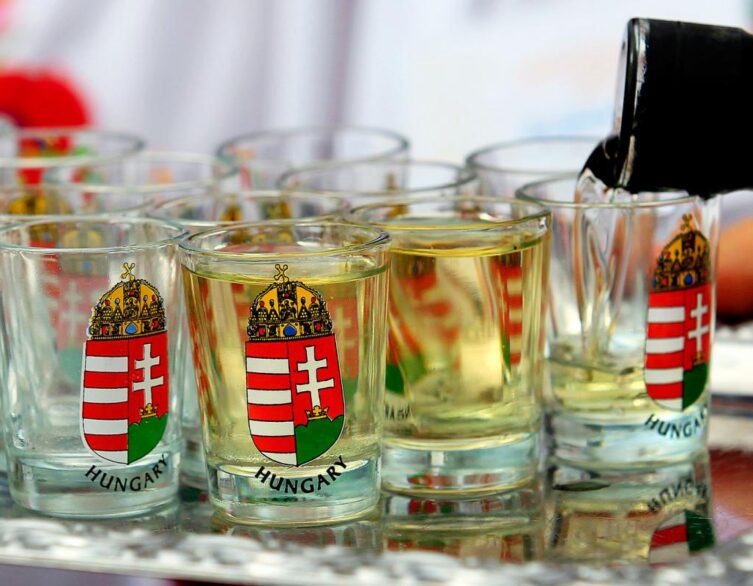What is Palinka?

Palinka or as the locals call it, pálinka, is a well-loved fruit brandy from Hungary, known for its strong flavor and high alcohol content. This special drink is deeply rooted in Hungarian culture and is often enjoyed during celebrations or as a digestive aid. Let’s dive into the world of palinka to understand its origins, how it’s made, and the different types available.
Key Takeaways
- Palinka is a traditional Hungarian fruit brandy with a high alcohol content, typically between 40-80%.
- The drink is made exclusively from fruits grown, distilled, and bottled in Hungary, following strict laws.
- Palinka has a rich history dating back to the 14th century and has evolved significantly over time.
- There are various types of Palinka, including Kisüsti (small pot), Érlelt (aged), and Ágyas (bedded).
- Proper serving and drinking etiquette is important to fully appreciate the flavors and aromas of Palinka.
Palinka: Drink It For Any Occasion
Palinka is a traditional Hungarian fruit brandy that packs a punch. Made from a variety of fruits like plums, apricots, and cherries, this drink is known for its strong flavor and aroma. Imagine a fruit salad, but in liquid form and with a kick! It’s not just a drink; it’s an experience. Hungarians enjoy it at any time, whether they’re celebrating or just need a pick-me-up.
Palinka’s Alcohol Percentage
Now, let’s talk about the elephant in the room: the palinka’s alcohol percentage content. Palinka can range from 40% to a whopping 80% ABV (Alcohol by Volume). Yes, you read that right. It’s like the superhero of drinks—strong and unforgettable. Just remember, with great power comes great responsibility. So, maybe don’t chug it like it’s soda.
The Palinka Law
Ah, the Palinka Law. This isn’t some ancient scroll but a modern regulation. According to Hungarian law, a drink can only be called palinka if it’s made from fruits grown, distilled, and bottled in Hungary. Plus, it has to be free of any additives and have an ABV of at least 37.5%. So, if you ever find yourself in Hungary, you can legally distill up to 86 liters of palinka for personal use. Just don’t try to smuggle it out in your suitcase; customs might not find it as amusing as you do.
Palinka is more than just a drink; it’s a slice of Hungarian culture. Whether you’re sipping it slowly or using it to toast a special occasion, it’s a beverage that brings people together.
The History of Palinka
Medieval Origins
Palinka’s story starts way back in the 14th century. It was first known as “Aqua vitae reginae Hungariae,” which means “the water of life of the Queen of Hungary.” This early version was a mix of brandy and rosemary, used as a medicine for the royal family. Imagine that—getting a prescription for brandy! Talk about a royal treatment! Hungarians still use a saying referring to these times that goes like this:
„Medicine in small portion, remedy in a bigger one”
Evolution Through the Centuries
For a long time, palinka was a homemade treat, crafted by peasants in their backyards. But in the 17th century, the government decided to step in and regulate it. They probably thought, “Hey, this stuff is too good to be kept a secret!” Over the years, the methods of making palinka improved, and it became a staple in Hungarian culture. By the 19th century, it was no longer just a peasant’s drink but enjoyed by all social classes.
Modern Recognition
In 2002, the European Union recognized palinka as a “Hungaricum,” a term for products that are uniquely Hungarian. This was a big deal because it meant that only fruit brandy made in Hungary could be called palinka. Then came the “Palinka Law” in 2008, which set strict rules on how it should be made. So, next time you sip on some palinka, remember you’re drinking a piece of history that’s been perfected over centuries.
Palinka isn’t just a drink; it’s a journey through time, from medieval medicine to modern-day delight. Cheers to that!
How to Drink Palinka
Traditional Serving Methods
Drinking palinka is almost a ritual in Hungary. Traditionally, it’s served in a small, tulip-shaped glass. This shape helps to concentrate the fruity aromas, making each sip a sensory experience. Pro tip: Always serve palinka at room temperature to fully enjoy its rich flavors. If you chill it, you might as well be drinking flavored water!
Best deals of Budapest
Perfect Pairings
Pairing palinka drink with food can elevate your tasting experience. Here are some classic pairings:
- Cheese: Aged cheeses, especially those with a strong flavor, go wonderfully with palinka.
- Meat: Smoked meats or sausages are a great match. Think of it as a Hungarian charcuterie board.
- Desserts: Fruit-based desserts like apple pie or apricot tart can complement the fruity notes of palinka.
Palinka Etiquette
When drinking palinka, there are a few unwritten rules to follow:
- Toast Properly: Always make eye contact when toasting. It’s considered good luck and shows respect.
- Sip, Don’t Shoot: Unlike other spirits, palinka is meant to be sipped slowly. Savor the flavors and enjoy the moment.
- Know Your Limits: Palinka is strong stuff. With an alcohol content ranging from 40% to 80%, it’s best to pace yourself. So don’t be fooled by the fruity taste and gulp it down!
Drinking palinka is not just about the alcohol; it’s about the experience, the flavors, and the tradition. So, take your time, enjoy the process, and maybe even share a funny story or two. Cheers!
Varieties of Palinka
Kisüsti – Small Pot
Kisüsti is a type of palinka that’s made in a special way. The name literally means “small pot” in Hungarian, which is fitting because it’s made in these cute little copper pots that can’t hold more than 1000 liters. But don’t let the size fool you – the double distillation process in these small pots gives Kisüsti a flavor that’s out of this world! It’s rich, unique, and packs a serious punch. I like to think of it as the espresso shot of the palinka family – small but mighty, you know? If you’re a fan of palinka, you’ve gotta give Kisüsti a try!
Érlelt – Aged
Érlelt palinka is aged for at least three months in a wooden cask that’s smaller than 1000 liters. But if you’re feeling extra fancy, you can let it age for six months or more in a cask that’s 1000 liters or bigger. It’s like giving it a bit more time to grow up and mature. When you take a sip of Érlelt palinka, it’s like having a conversation with a wise old grandparent. It’s got all these stories and depth that you can’t find in younger drinks. It’s smooth, it’s mellow, and it’s got a lot of character. Definitely worth trying if you’re into spirits with a bit of history behind them!
Ágyas – Bedded
“Ágyas” palinka is a pretty cool twist on the classic Hungarian spirit. Basically, they take the palinka and let it hang out with some fruit for at least three months. It’s like the palinka and the fruit become best buddies during this time! The fruit they use can either be the same type they used to make the palinka in the first place, or they can mix it up and throw in something different. It’s like giving the palinka a chance to make some new fruity friends. For every 100 liters of palinka, they need to add at least 10 kg of ripe fruit or 5 kg of dried fruit. It’s like a big ol’ fruit salad that decided to take a nap in a barrel of palinka—delicious and a bit cheeky!
“Törköly” or Pomace Palinka
It’s a special kind of palinka that’s made from grape pomace, which is basically the leftover skins, seeds, and stems from the winemaking process. Believe it or not, it’s one of the oldest types of palinka out there! Not only does it taste great, but many people believe that it can actually help with digestion. That’s why it’s often enjoyed in small amounts after a hearty meal. It’s like a little post-dinner treat that’s both delicious and beneficial! No wonder that Törköly palinka is incredibly popular, especially in regions where wine production is a big deal.
“Ó” – Old
When it comes to pálinka, the term “Ó” is used to describe a special kind of aged spirit. To earn this distinction, the pálinka must be carefully matured in a wooden cask for a specific period of time. If the cask is smaller than 1000 liters, the pálinka should be aged for at least 12 months. However, if the wooden cask is 1000 liters or larger, the pálinka needs to be aged for a minimum of 24 months. This aging process helps to develop the unique flavors and aromas that make “Ó” pálinka so delightful and cherished by those who appreciate a well-crafted spirit.
If you ever find yourself in Hungary, don’t miss the chance to try these varieties. Each one offers a unique experience that’s worth savoring.
Conclusion
So, there you have it! Palinka isn’t just a drink; it’s a Hungarian tradition in a bottle. Whether you’re sipping it to celebrate, to commiserate, or just because you can, this fruity spirit packs a punch and a whole lot of history. Next time you find yourself in Hungary, don’t miss out on trying this iconic beverage. Just remember, it’s strong stuff—so maybe don’t plan on doing anything too important afterward. Cheers to palinka drink, the drink that turns any occasion into a memorable one!
Image source: Reuters / Balogh László



















